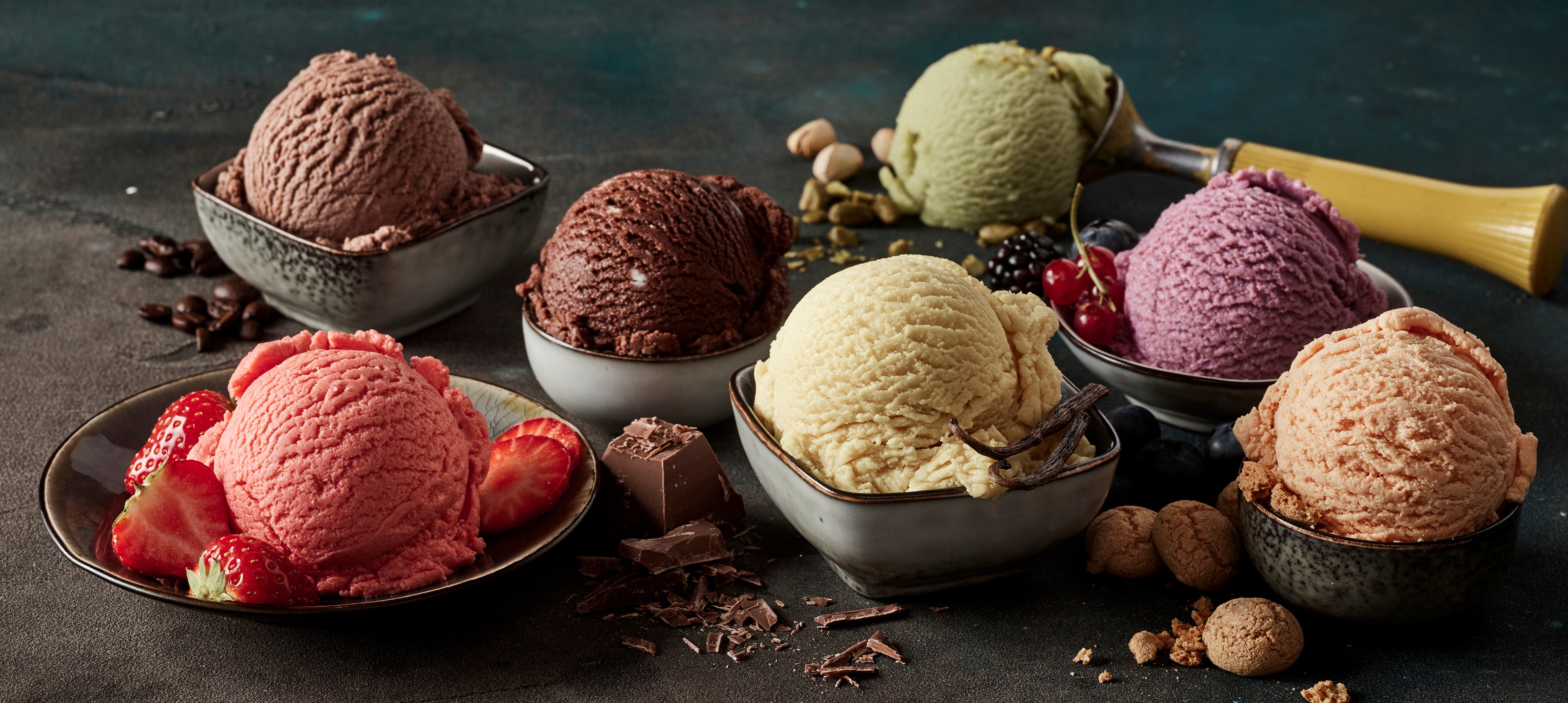Ingredients and factors to make ice cream in a restaurant

The World of Ice Cream: A Guide for Restaurants
Frozen desserts have excellent potential in the restaurant industry. To begin with, the possibilities this product offers within a menu are nearly infinite, especially for a chef who knows how to utilize all the resources of a kitchen. Unfortunately, many restaurant professionals, perhaps due to a lack of specific technique, give up on making their own frozen treats. This deprives them of a beautiful product that customers love.
The Untapped Potential of Ice Cream in Your Kitchen
Think about the possibilities. For instance, leftover fruit from a banquet can be used to make sorbet for the next day's menu. A background note of sweet wine can, by magic, transform into a delicious cream. Furthermore, even savory items like blue cheese or mushrooms can be transformed into spectacular frozen creations. The modern frozen dessert was born in the kitchen, and it's time to bring it back to its natural, creative environment.
What Defines a High-Quality Frozen Dessert?
In general, a frozen dessert is a prepared product that we consume at a cold temperature. The creation process involves several key steps. First, we gather and balance the ingredients. Then, we subject them to a process of simultaneous beating and cooling in a batch freezer. This technique incorporates a specific amount of air, ensuring the final product remains plastic or scoopable, even at low temperatures.
Ice Cream vs. Sorbet vs. Granita: What's the Difference?
It's common to confuse different types of frozen desserts. However, each has a distinct definition:
- Milk or Cream Ice Creams: These are the most traditional frozen desserts. They contain milk fat and milk proteins in their composition and have a certain amount of air incorporated during production. They have a pasty, plastic texture ideal for scooping.
- Sorbets: Sorbets are a type of frozen treat that contains no fat or milk powder. According to food standards (like those from the International Dairy Foods Association), they must contain a minimum of 15% fruit. Like their dairy-based cousins, they have air incorporated and a scoopable texture.
- Granitas: In contrast, granitas are semi-liquid preparations that do not contain any incorporated air. Makers serve them at a warmer temperature (around -2°C to -4°C), and they have a coarser, icier texture made of distinct ice crystals.
The AussieBlends® Solution
AussieBlends® offers a wide variety of professionally balanced mixes to cover the requirements of any frozen dessert maker. We offer Dairy Mixes, Vegan Mixes, No Added Sugar Mixes, and Sorbet Mixes. Our products are blended for various preparation processes, including Gelato, Liquid Nitrogen Ice Cream, Soft Serve, and Rolled Ice Cream.

